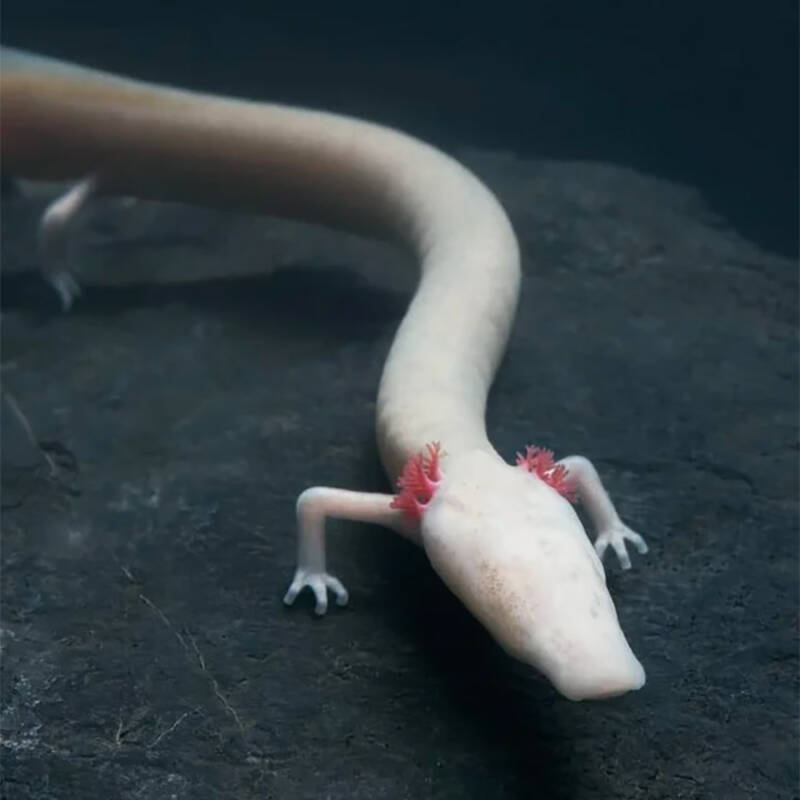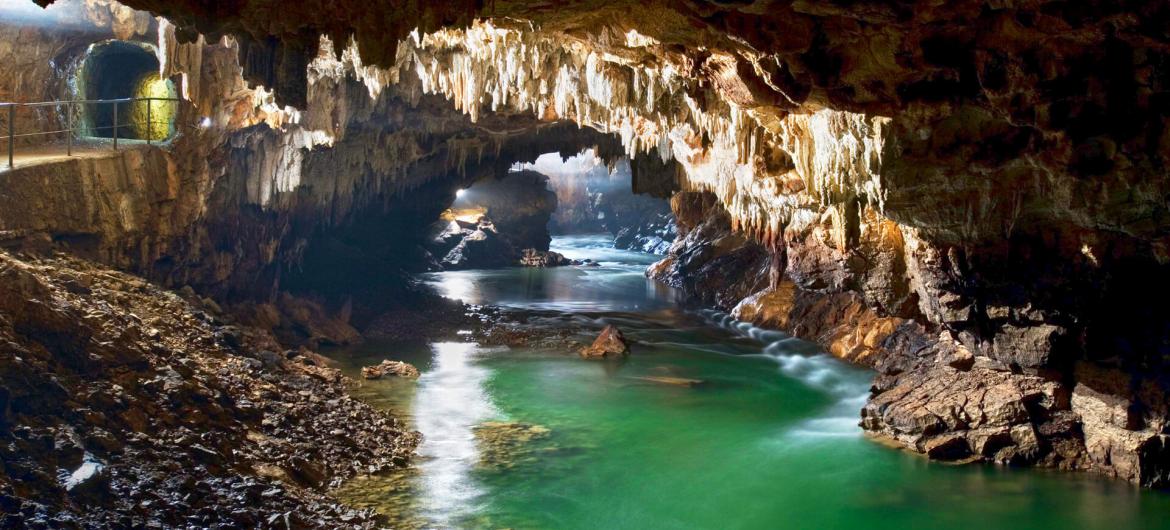Indian Economy
World Investment Report: UNCTAD
Why in News
Recently, the United Nations Conference on Trade and Development (UNCTAD) released the World Investment Report 2020.
- The World Investment Report focuses on trends in Foreign Direct Investment (FDI) worldwide, at the regional and country levels and emerging measures to improve its contribution to development.
Key Points
- Global Scenario:
- According to the report, global FDI flows are forecast to decrease by up to 40% in 2020, from their 2019 value of $1.54 trillion.
- This would bring global FDI below $1 trillion for the first time since 2005. The FDI is projected to decrease by a further 5% to 10% in 2021.
- Developing economies are expected to see the biggest fall in FDI because they rely more on investment in Global Value Chain (GVC) based industries, which have been severely hit due to Covid-19 pandemic.
- They have also not been able to put in place the same economic support measures as developed economies.
- However, the investment flows are expected to slowly recover by the start of 2022.
- Global FDI flows rose modestly in 2019, following the sizable declines registered in 2017 and 2018.
- The rise in FDI was due to the waning of impact of the 2017 tax reforms in the United States.
- India’s Investment Scenario:
- India jumped from 12th position in 2018 to 9th position in 2019 among the world’s largest FDI recipients.
- In 2019, the FDI inflows into India jumped over 20% to $51 billion.
- The report also observed that FDI into India may decline sharply in 2020 because of the impact of the Covid-19 pandemic and the consequent lockdown measures, supply chain disruptions and economic slowdown.
- In India the number of greenfield investment announcements declined by 4% in the first quarter of financial year 2020-21. The Mergers and acquisitions (M&A) also contracted by 58%.
- A greenfield investment is a type of FDI in which a parent company creates a subsidiary in a different country, building its operations from the ground up.
- However, the report mentioned that India’s large market will continue to attract market-seeking investments to the country.
- India’s professional services and the digital economy could see a faster rebound as global venture capital firms and technology companies continue to show interest in India’s market through acquisitions.
- Investors concluded deals worth over $650 million in the first quarter of 2020, mostly in the digital sector.
- India jumped from 12th position in 2018 to 9th position in 2019 among the world’s largest FDI recipients.
UNCTAD
- United Nations Conference on Trade and Development (UNCTAD) was established in 1964 to promote development-friendly integration of developing countries into the world economy.
- UNCTAD is a permanent intergovernmental body headquartered at Geneva in Switzerland.
- Some of the reports published by it are:
- Trade and Development Report
- World Investment Report
- The Least Developed Countries Report
- Information and Economy Report
- Technology and Innovation Report
- Commodities and Development Report
Way Forward
- The efforts need to be put to increase the investment and also countries need to deal with Covid-19 pandemic strategically.
- To deal with the current slowdown, India can provide its poor with direct cash, which will increase the demand in the economy. This will subsequently lead to increase in investment and production in the economy.
Biodiversity & Environment
World Crocodile Day
Why in News
World Crocodile Day is celebrated on 17th June. The day is a global awareness campaign to highlight the plight of endangered crocodiles and alligators around the world.
Crocodilian Species in India
- Mugger or Marsh Crocodile:
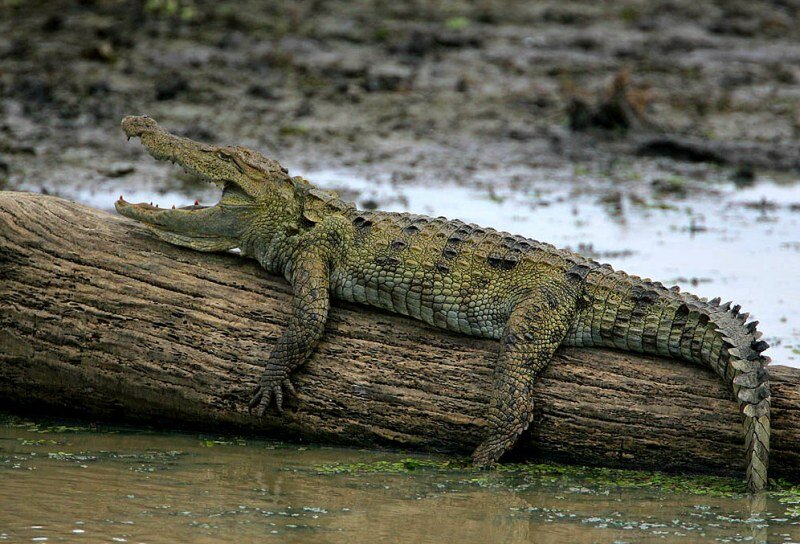
- Description:
- The mugger is an egg-laying and hole-nesting species.
- The mugger is also known to be dangerous.
- Habitat:
- It is mainly restricted to the Indian subcontinent where it may be found in a number of freshwater habitat types including rivers, lakes and marshes. However, it can even be found in coastal saltwater lagoons and estuaries.
- It is already extinct in Bhutan and Myanmar.
- Threats:
- Habitat destruction, fragmentation, and transformation, fishing activities and use of crocodile parts for medicinal purposes.
- Protection Status:
- IUCN List of Threatened Species: Vulnerable
- CITES : Appendix I
- Wildlife Protection Act, 1972 : Schedule I
- Description:
- Estuarine or Saltwater Crocodile:
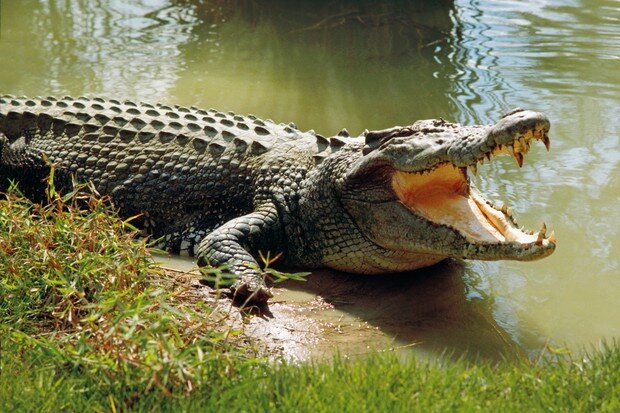
- Description:
- It is considered as the Earth’s largest living crocodile species.
- The estuarine crocodile is infamous globally as a known maneater.
- Habitat:
- It is found in Odisha’s Bhitarkanika National Park, the Sundarbans in West Bengal and the Andamans and Nicobar Islands.
- It is also found across Southeast Asia and northern Australia.
- Threats:
- Illegal hunting, habitat loss, and antipathy toward the species because of its reputation as a man-eater continue to put pressure on the population.
- Protection Status:
- IUCN List of Threatened Species: Least Concern
- CITES : Appendix I (except the populations of Australia, Indonesia and Papua New Guinea, which are included in Appendix II).
- Wildlife Protection Act, 1972 : Schedule I
- Description:
- Gharial
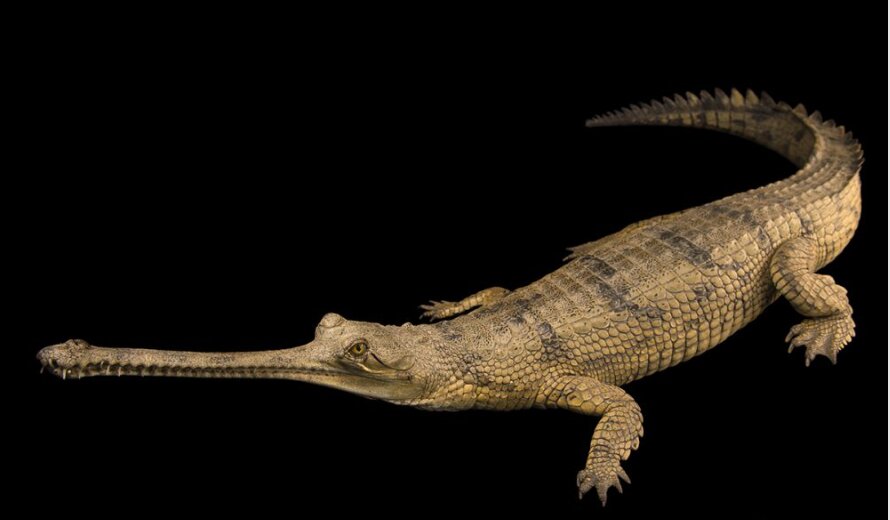
- Description:
- Gharials, sometimes called gavials, are a type of Asian crocodilian distinguished by their long, thin snouts which resembles a pot (ghara in Hindi).
- Gharials are a type of Crocodilians that also includes crocodiles, alligators, caimans, etc.
- The population of Gharials are a good indicator of clean river water.
- The gharial is known to be a relatively harmless, fish-eating species.
- Habitat:
- The gharials are mostly found in fresh waters of the himalayan rivers.
- The chambal river in the northern slopes of the Vindhya mountains ( Madhya Pradesh) is known as the primary habitat of gharials.
- Other himalayan rivers like ghagra, gandak river, Girwa river, Ramganga river and the Sone river are secondary habitats for gharials.
- Threats:
- Illegal sand mining, poaching, increased river pollution, dam construction, massive-scale fishing operations and floods.
- Protection Status:
- IUCN List of Threatened Species: Critically Endangered
- CITES : Appendix I
- Wildlife Protection Act, 1972 : Schedule I
- Description:
Human-Crocodile Conflict
- Reasons:
- An encroachment of humans on the river banks and marshy areas with an increased urbanisation is one of the foremost reasons for increasing human-crocodile conflict in these areas.
- Hotspots:
- Vadodara in Gujarat, Kota in Rajasthan, Bhitarkanika in Odisha and the Andaman and Nicobar Islands are considered as the human-crocodile conflict hotspots in India.
- Possible Solutions:
- Considering the importance of crocodiles in maintaining the balance in the ecosystem, raising awareness among local people with the possible relocation of crocodiles are some of the feasible options for the protection of the species.
Indian Crocodile Conservation Project
- The Crocodile Conservation Project was launched in 1975 in different States.
- The Gharial and Saltwater crocodile conservation programme was first implemented in Odisha in early 1975 and subsequently the Mugger conservation programme was initiated.
- As a result of the programme, the estimated number of the saltwater crocodiles increased from 96 in 1976 to 1,640 in 2012 in India.
Way Forward
- There is a need to utilise manpower, modern technology and funds to conduct a proper survey to find the real time status of the crocodile population in the country.
- It can be done through geo-tagging the animals so that their movements can be monitored to prevent human-crocodile conflicts.
Biodiversity & Environment
Olms in Postojna Cave of Slovenia
Why in News
Recently, three Olms have been put on display in Slovenia’s Postojna Cave, where they hatched in 2016 in a rare successful breeding.
Key Points
- Description:
- The Olms are eyeless (skin covered eyes) pink salamanders also known as the "baby dragon" and "human fish" for its pale skin-like colour.
- They feed on detritus and endemic cave vertebrates and hide in crevices or bottom sediment when disturbed. They can survive without food for up to 10 years.
- A long-lived species that only matures to a sexual stage after the age of 12-15 years and reproduces very slowly.
- It can live a century and breeds only once a decade usually in laboratories throughout Europe or deep in caves away from people.
- They have a powerful sensory system of smell, taste, hearing and electrosensitivity.
- Threats:
- The olm requires clean water, and is therefore vulnerable to water pollution.
- Consequently, the major threats to the olm are pollution and habitat disturbance from land use changes occurring above the cave systems.
- Habitat:
- They are found in large subterranean aquatic karst systems formed in limestone and dolomite rocks, and may be found in cave entrances.
- They are an entirely aquatic species and prefer waters ranging from 5-15°C.
- Found in Bosnia and Herzegovina, Croatia, Italy, Slovenia and France.
Karst Topography
- Any limestone or dolomitic region showing typical landforms produced by the action of groundwater through the processes of solution and deposition is called Karst topography.
- It is named after the typical topography developed in limestone rocks of Karst region in the Balkans adjacent to Adriatic sea.
- The name of this type of topography comes from the Karst region in Yugoslavia, karst topography can be found all over the world.
- The karst topography is also characterised by erosional and depositional landforms. Karst landscapes feature caves, underground streams and sinkholes on the surface. Where erosion has worn away the land above ground, steep rocky cliffs are visible.
Geography
Earth’s Mantle and Evolution of Life
Why in News
According to a study published in the journal ‘Nature Communications’, an evolution of the Mantle of the Earth could have not only controlled evolution of the atmosphere, but also evolution of life.
Key Points
- Role of Earth’s Mantle:
- According to the study, although there were amounts of oxygen before the Great Oxidation Event (GOE), it could not concentrate in the atmosphere.
- This was because of the reaction of oxygen with the large amount of gases ejected by Volcanoes. The oxygen produced by the early life-forms combined with things like hydrogen ( for example), and was removed from the atmosphere.
- When volcanoes are active, they send large amounts of gases into the atmosphere. The nature of these gases depends on the nature of the materials in the Earth’s mantle.
- As volcanic activity continued, it produced less material that would readily combine with oxygen. Earth’s mantle was becoming more and more oxidized.
- With time, the oxygen produced by life-forms could accumulate in the atmosphere. This started the Great Oxidation Event, paving the way for complex life.
- Great Oxidation Event:
- The atmosphere of the early Earth lacked oxygen. This began to change during what is known as the Great Oxidation Event (GOE).
- It refers to a series of chemical changes that geologists and geochemists have observed in rocks that are between 2.5 and 2.3 billion years old.
- These changes were the result of oxygen given off by ancient cyanobacteria (blue-green algae). Communities of this bacteria lived in shallow seawater and were preserved in rocks as structures called stromatolites.
- Stromatolite means ‘layered rock’. It is a rocky structure created by the activity of colonies of single-celled bacteria, mostly cyanobacteria.
- Oxygen first accumulated in Earth’s atmosphere at this time and has been present ever since.
- Boom of Cyanobacteria and Carbonates:
- Prior to the GOE, an increase in tectonic activity produced new volcanoes which pumped big amounts of carbon dioxide in the air which led to the warming of the climate, increased rainfall, and leading to more minerals washed into the ocean.
- These phenomena led to the boom of cyanobacteria and carbonates. The increase in photosynthesis is attributed to the rise in the population of cyanobacteria and in turn, the carbon present in the atmosphere was buried underground.
Earth’s Mantle
- The mantle is the mostly-solid bulk of Earth's interior. It lies between Earth's dense, super-heated core and its thin outer layer, the crust.
- It is about 2,900 kilometers thick and makes up 84% of Earth’s total volume.
- The upper portion of the mantle is called the asthenosphere. The word astheno means weak. It is considered to be extending upto 400 km. It is the main source of magma that finds its way to the surface during volcanic eruptions.
- The crust and the uppermost part of the mantle are called lithosphere. Its thickness ranges from 10-200 km.
- The lower mantle extends beyond the asthenosphere. It is in solid state.
Cyanobacteria
- Cyanobacteria are aquatic and photosynthetic, that is, they live in the water, and can manufacture their own food. Because they are bacteria, they are quite small and usually unicellular, though they often grow in colonies large enough to see.
- They have the distinction of being the oldest known fossils, more than 3.5 billion years old.
- They are important providers of nitrogen fertilizer in the cultivation of rice and beans.
- The oxygen atmosphere that we depend on was generated by numerous cyanobacteria during the Archaean and Proterozoic Eras (4.6 billion to 541 million years ago).
Way Forward
- The study indicates that one cannot exclude the mantle of the planet when considering the evolution of the surface and life of the planet.
- It not only affects understanding of earth and the emergence of complex life here, but also that of exoplanets, and their potential to support life.
Biodiversity & Environment
Largest Decline in Arctic Sea Ice
Why in News
The National Centre of Polar and Ocean Research (NCPOR) has observed the largest decline in the Arctic Sea ice in the last 41 years.
- The decline in the Arctic Sea ice is due to global warming — leading to localised increase in evaporation, air humidity, cloud cover and rainfall.
Sea Ice
- Sea ice arises as seawater freezes. Because ice is less dense than water, it floats on the ocean's surface.
- Sea ice covers about 7% of the Earth's surface and about 12% of the world's oceans.
Key Points
- Increased Rate of Sea Ice Decline:
- In the last 40 years (1979-2018), the sea ice has been declining at 4.7% per decade, while the current declining rate was found to be 13% in July 2019.
- Thus, it has been noted that the volume of ice formation during winters is unable to keep pace with the volume of ice loss during summers.
- Additionally, it has been predicted that if this trend continues, there would be no ice left in the Arctic Sea by 2050.
- Impacts:
- The decrease of the Arctic Sea ice area and the increase in the duration of summer and autumn seasons affected the local weather and climate over the Arctic Ocean and its marginal seas.
- Being a sensitive indicator of climate change, the loss of ice cover in the Arctic Sea may affect other components of the climate system such as reduction of heat, water vapour, and other material exchange between the atmosphere and the sea.
- The northern hemisphere experienced record high-temperature rise, especially during the spring and summer months.
National Centre of Polar and Ocean Research
- National Centre of Polar and Ocean Research (NCPOR) was established as an autonomous Research and Development Institution of the Ministry of Earth Sciences in 1998.
- It is located in Goa.
- Earlier known as National Centre for Antarctic and Ocean Research (NCAOR), NCPOR is India’s premier R&D institution responsible for the country’s research activities in the Polar and Southern Ocean realms.
- It is the nodal agency for planning, promotion, coordination and execution of the entire gamut of polar and southern ocean scientific research in the country as well as for the associated logistics activities.
Way Forward
- The sea-ice loss at such a high rate is a matter of concern for all the lives on Earth.
- Thus, maintaining the balance between anthropological activities and carrying capacity of the environment is one of the foremost steps that can be taken at this point of time.
International Relations
AIIB Loan for India
Why in News
Recently, the Asian Infrastructure Investment Bank (AIIB) has approved a $750 million loan to India to strengthen the country’s battle against the adverse impact of Covid-19 pandemic on poor and vulnerable households.
- Earlier, it had approved $500 million for ‘Covid-19 Emergency Response and Health Systems Preparedness Project’ initiated by India.
Key Points
- $750 million loan: It is co-financed by the AIIB and the Asian Development Bank.
- Aim:
- It aims to ensure economic resilience to prevent long-term damage to productive capacity, including human capital.
- The support will go towards bolstering economic aid for businesses, including for the informal sector, expanding social safety nets for the needy, and strengthening the country’s health care systems.
- Loan by AIIB to India:
- AIIB’s sovereign loans to India amounts to $3.06 billion.
- The current loan will be the second for India under AIIB’s Covid-19 Crisis Recovery Facility.
- The Crisis Recovery Facility has been formed in response to urgent economic, financial and public health pressures and to support a quick recovery after the current crisis (Covid-19).
- It will offer $5-10 billion of financing to public and private entities over 18 months i.e. from April 2020 to October 2021.
- The funding is done either with the World Bank or ADB.
- Loan by ADB to India:
- It has assured Indian government of $2.2 billion support to fight against the Covid-19 pandemic.
- Earlier, it had provided a $1.5 billion loan to India.
Asian Infrastructure Investment Bank
- The Asian Infrastructure Investment Bank (AIIB) is a multilateral development bank with a mission to improve social and economic outcomes in Asia.
- It is established by the AIIB Articles of Agreement (entered into force 25th December 2015) which is a multilateral treaty.
- Headquarters: Beijing, China
- Members:
- 102 members.
- India joined AIIB in 2016 as a regional member of the Bank.
- Further, fourteen of the G-20 nations are AIIB members including France, Germany, Italy and the United Kingdom.
- China is the largest shareholder in AIIB with a 26.06% voting power, followed by India with a 7.62% voting power.
Asian Development Bank
- ADB is a regional development bank established on 19th December 1966.
- Headquarters: Manila, Philippines.
- Members:
- It has 68 members, 49 from within Asia.
- India is a founding member.
- As of 31 December 2019, ADB’s five largest shareholders are Japan and the United States (each with 15.6% of total shares), the People’s Republic of China (6.4%), India (6.3%), and Australia (5.8%).
- It is committed to achieving a prosperous, inclusive, resilient, and sustainable Asia and the Pacific, while sustaining its efforts to eradicate extreme poverty.
Agriculture
Axone: Ethnic Cuisine of Northeast India
Why in News
Recently, Axone or fermented soya bean has become popular, which is eaten by many tribal communities in different parts of Northeast India especially in Nagaland.
Key Points
- Axone — also called as akhuni — is a fermented soya bean of Nagaland, known for its distinctive flavour and smell.
- It is a condiment (a spice, sauce, or preparation that is added to food) used to make pickles, chutney or curries.
- It is prepared and eaten across Nagaland mainly by the Sumi (also Sema) tribe.
- It belongs to the broader phenomena of fermentation necessary for food preservation in certain ecological contexts.
- Fermentation gives it a distinct smell and taste.
- Fermented soya bean is known by different names in different parts of Northeast India, including Meghalaya and Mizoram, Sikkim, Manipur as well in other South, Southeast and East Asian countries of Nepal, Bhutan, Japan, Korea, China, Myanmar, Vietnam and Indonesia.
- It is the one food that connects the Eastern Himalayas as a culturally cross-cutting cuisine.
Food Fermentation
- Food fermentation is a food processing technology that utilizes the growth and metabolic activity of microorganisms for the stabilization and transformation of food materials.
- Fermentation was primarily developed for the stabilization of perishable agricultural produce.
- It is a process through which microorganisms like yeast and bacteria convert carbs- such as starch and sugar- into alcohol or acids.
- Uses:
- The production of carbon dioxide is used to make bread.
- The production of organic acids is exploited to preserve and flavor vegetables and dairy products.
- The production of alcohol is utilised to convert fruit juices to wine, grains into beer, and foods rich in starch, such as potatoes, are fermented and then distilled to make spirits.
Soya Bean
- The soya bean (Glycine max) is a species of legume native to East Asia, widely grown for its edible bean, which has numerous uses e.g. soya milk, soya food etc.
- It is a significant and cheap source of protein apart from dietary minerals and B vitamins.
Sumi Tribe
- The 'Sumi Naga' is one of the major ethnic groups in Nagaland.
- Sumi Nagas mostly inhabit the central and southern regions of Nagaland.
- There are also seven Sumi villages in Tinsukia District of Assam.
- Tuluni and Ahuna are the major festivals.
Way Forward
- It has been seen often that people from Northeast are being refrained from cooking axone and other fermented foods. This has often led to relegating the food of particular social groups to a remote and primitive position and giving birth to racial politics and experiences of exclusion.
- Here, the fermented food is connected to a specific community and its dignity. Such food habits lead to strengthening of sentiments towards one’s own community and express a sense of identity, comfort and familiarity.
International Relations
Victory Day Parade
Why in News
India has decided to send a contingent of 75 personnel from its three armed forces to participate in Russia's 75th World War II Victory Day Parade on 24 June, 2020.
Key Points
- The Russian parade is held every year on Victory Day (May 9), which marks the surrender of Nazi Germany in 1945.
- This year it was delayed because of the Covid-19.
- The victory day parade honours the heroism and sacrifices made by the Russian and other friendly people.
- India’s participation in the parade will be a mark of tribute and solidarity with the people of Russia.
- Earlier in January 2020, Russia had invited India to take part in the victory day parade.
India-Russia Defence Cooperation
- Defence remains the most significant aspect of India's relations with Russia with both sides looking to encourage joint manufacturing of equipment under India's Make-in-India programme and through transfer of technology.
- After the Vladivostok summit in 2019, both the countries had recognized the requirement of an institutional arrangement for reciprocal provision of logistic support and services for the armed forces.
- They had also agreed to prepare a framework for cooperation on it.
- During the 5th India Russia military industry conference held during the Defexpo 2020 in Lucknow (Uttar Pradesh), companies from both the countries signed various Memorandum of Understanding( MoUs) to develop a range of defence equipment.
- In 2019, despite the threat of U.S. sanctions, India went ahead with the decision to purchase the S-400 missile defence system, worth over $5 billion.
- Both the countries continue to encourage military to military cooperation through military political dialogue and joint military exercises.
- In 2019, India and Russia carried out a second joint tri-service exercise INDRA.
- In 2019, India also took part in Exercise TSENTR 2019 of the Russian Armed Force.
- Despite Russia's deep military and political ties with China, and its own relations with the U.S., India continues to look at Russia as a key partner.
World War II
- World War II, started in Europe in 1939 and assumed the character of a world war. It was fought between Allied and Axis powers.
- The Allied powers were represented by Great Britain, USA, France etc. While the Axis powers were led by Germany, Italy and Japan.
- The war came to an end in September 1945.
- Cause of War:
- Treaty of Versailles of 1920.
- Aggressive Policy of expansion by the fascist powers (Germany and Italy).
- Appeasement policy by Western powers towards fascist powers to fight against Communist Soviet Union.
- Rise of Japan as imperialist power.
- Rome-Berlin-Tokyo Axis.
- Consequences of the War:
- Killing of Jews in concentration camps.
- Atomic attacks on the Japanese cities of Hiroshima and Nagasaki in 1945.
- Division of the world into two power blocs – the Communist Bloc headed by Soviet Union and the Western Bloc headed by the USA.
- Beginning of the Cold War which continued till the disintegration of Soviet Union in 1991.
- Foundation of United Nation Organisations in 1945.

